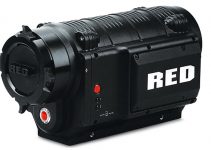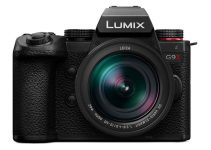There’s no denying that DJI has dominated the video stabilization market with their Ronin family of gimbals for quite some time now. By continuing its successful gimbal market share expansion, the company had recently introduced the Ronin-S – DJI’s first single-handed gimbal stabilizer that’s set to rival popular lower-cost solutions like the Zhiyun’s famous Crane V2. So, how does the Ronin-S hold up against the competition?
That’s exactly what we are going to find out now as filmmaker and computer enthusiast Max Yuryev unveils why the DJI’s latest gimbal is a formidable opponent against proven products like the Zhiyun Crane V2, highlighting some of the essential features that make the unit stand out from the rest.
In terms of construction, the Ronin-S is definitely going to be one of the more polished and durable single-handed gimbals on the market once it becomes available to the masses. With an all-metal design painted in a sleek matte black finish, the unit does not only look aesthetically pleasing, but it’s also built to operate with heavy cameras including the Panasonic EVA1, Canon C200, and even the ALEXA Mini.
Unfortunately, that’s a feature that can’t be found on the Zhiyun Crane V2, which is typically suited for smaller mirrorless cameras weighing up to 7lb like the A7III and GH5/GH5s.
While the support for heavy cameras will appeal to many professional filmmakers, keep in mind that this added weight support increases the overall mass of the build which makes it heavier than the Zhiyun Crane V2. Nevertheless, it seems that the amazing expandability and usability features of this gimbal are worth the extra physical effort required.
As Max states, DJI has made many clever decisions when designing the Ronin-S. Unlike the Zhiyun Crane V2, the company has included a small LCD screen on the gimbal with navigation buttons to reduce the need of using a smartphone along the way. Plus, Ronin-S users will have access to an Infinite Mode that allows them to roll the camera on the fly and get some pretty awesome shots.
Expandability is also a major plus point with the Ronin-S. Some optional accessories that can be attached to the gimbal include an extra mounting bracket and cold shoe accessory mount, focus command unit as well as a detachable battery grip.
In addition, various switches and buttons are located around the gimbal for instant mode switching and lock toggling. These physical shortcuts allow you to quickly trigger different gimbal configurations, all without having to stop recording to switch gimbal modes like when shooting with the Zhiyun Crane V2.
Even though the demand for the Ronin-S is steadily increasing, DJI has been a bit discreet when it comes to the pricing and release of the product. The company estimates that they will start sales in early June as they put finishing touches on the gimbal’s software. As for price, DJI has stated that the Ronin-S will hit the market selling for less than $800, signifying it’s greater price tag over the Zhiyun Crane V2.
Based on that price estimate solely, it’s safe to say that not everyone is going to abandon Zhiyun and their line of gimbal stabilizers. If you’re a beginner filmmaker or someone who primarily operates with smaller mirrorless cameras, the Zhiyun Crane V2 may still be the only gimbal you need. On the other hand, if you’re a seasoned professional who constantly shoots with heavier cameras, or just want to take advantage of the latest gimbal technology, the Ronin-S is undoubtedly an attractive piece of gear to invest in.
[source: Max Yuryev]
Disclaimer: As an Amazon Associate partner and participant in B&H and Adorama Affiliate programmes, we earn a small comission from each purchase made through the affiliate links listed above at no additional cost to you.




